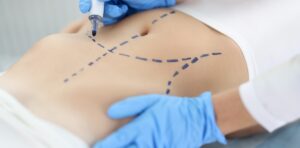Liposuction is a popular cosmetic surgery designed to remove excess fat deposits from specific areas of the body, sculpting a more contoured and proportionate appearance. It is not a weight-loss procedure but rather a body-contouring technique for individuals who struggle with stubborn fat that does not respond to diet and exercise. Common treatment areas include the abdomen, thighs, hips, buttocks, arms, back, and under the chin.
The Consultation Process
Before undergoing liposuction, patients meet with a board-certified plastic surgeon for an initial consultation. During this appointment, the surgeon assesses the patient’s overall health, discusses their goals and expectations, and determines whether they are a suitable candidate for the procedure. Ideal candidates are individuals who are at or near their target weight but have localized fat deposits resistant to lifestyle changes.
The surgeon will explain the different liposuction techniques, the expected results, and any potential risks. Patients should disclose their medical history, including any conditions, allergies, or medications they are taking. The surgeon may also take photographs and mark the areas to be treated, providing a clear roadmap for the procedure.
Types of Liposuction
Several liposuction techniques are available, each offering unique benefits:
- Tumescent Liposuction: The most common technique, where a saline solution mixed with anesthetic and epinephrine is injected into the fat deposits. This helps numb the area, reduce bleeding, and make fat removal easier.
- Ultrasound-Assisted Liposuction (UAL): Uses ultrasound energy to liquefy fat cells before suctioning them out, making it particularly effective for fibrous areas like the back and male chest.
- Laser-Assisted Liposuction (LAL): Uses laser energy to break down fat before removal, promoting skin tightening in the process.
- Power-Assisted Liposuction (PAL): Uses a vibrating cannula (a thin tube) to break up fat, making removal easier and often leading to less trauma and quicker recovery.
The surgeon will recommend the best technique based on the patient’s goals, body type, and medical considerations.
The Procedure
Liposuction is typically performed as an outpatient procedure under local anesthesia with sedation or general anesthesia, depending on the extent of the treatment. The process usually takes between one and three hours.
The surgeon makes small incisions in the target areas and inserts a cannula to break up and suction out the fat. The incisions are then closed, and a compression garment is applied to reduce swelling and support the newly contoured shape.
Recovery and Aftercare
Post-surgery, patients experience swelling, bruising, and mild discomfort, which gradually improves over a few weeks. Pain medication and compression garments help manage these symptoms. Most individuals can return to work within a few days to a week, but strenuous activities should be avoided for about four to six weeks.
To optimize healing, patients should:
- Follow all post-operative instructions, including wound care and medication guidelines.
- Wear a compression garment as advised to minimize swelling and promote skin retraction.
- Stay hydrated and maintain a healthy diet to support the recovery process.
- Avoid smoking and alcohol consumption, as they can hinder healing.
Results and Longevity
Initial results become visible once swelling subsides, typically within a few weeks, with final results apparent after three to six months. Liposuction permanently removes fat cells, but maintaining results requires a stable weight and healthy lifestyle choices. While treated areas are less likely to accumulate fat, weight gain can lead to fat storage in untreated areas.
Benefits and Risks
Liposuction offers several benefits, including enhanced body contours, improved self-confidence, and the ability to wear desired clothing more comfortably. However, as with any surgical procedure, there are potential risks, including:
- Irregular Contours: Uneven fat removal can result in lumps or indentations.
- Loose Skin: Some patients may experience loose skin, which may require additional skin-tightening procedures.
- Infection: Though rare, infections can occur if proper post-operative care is not followed.
- Numbness or Sensation Changes: Some patients experience temporary or permanent changes in skin sensation.
- Fluid Accumulation: In some cases, fluid pockets (seromas) may develop and require drainage.
Is Liposuction Right for You?
Liposuction is an excellent option for individuals seeking targeted fat removal and improved body proportions. It is not a substitute for weight loss but rather a contouring tool to enhance one’s natural shape. Consulting with an experienced plastic surgeon is the first step in determining if liposuction aligns with your aesthetic goals.
Liposuction has helped many individuals achieve a more sculpted and confident appearance. If you are considering this procedure, thorough research and professional consultation will ensure you make an informed decision. Understanding what to expect before, during, and after liposuction can help you achieve the best possible results and a smooth recovery.













